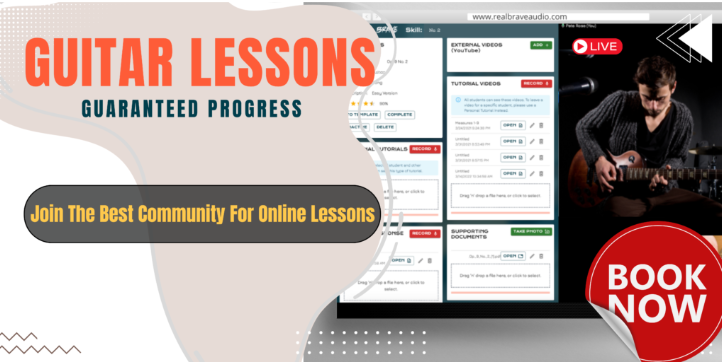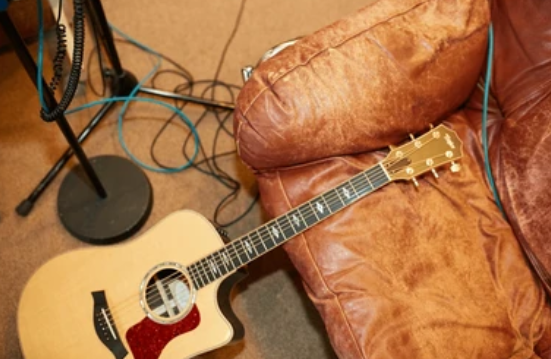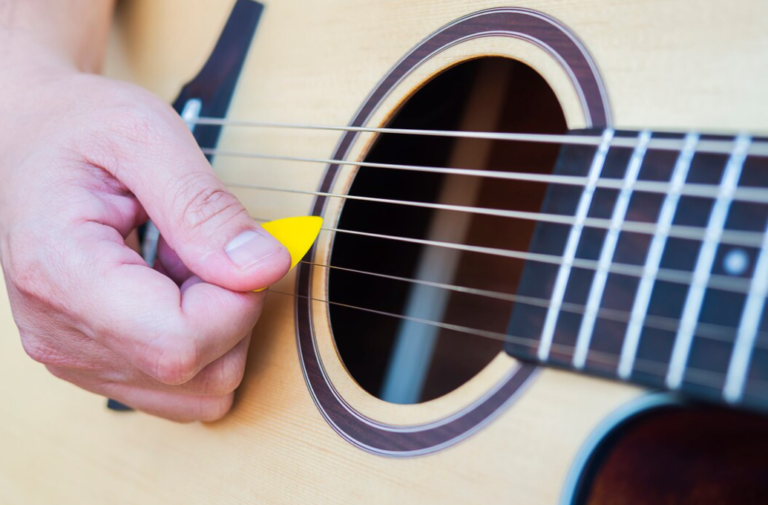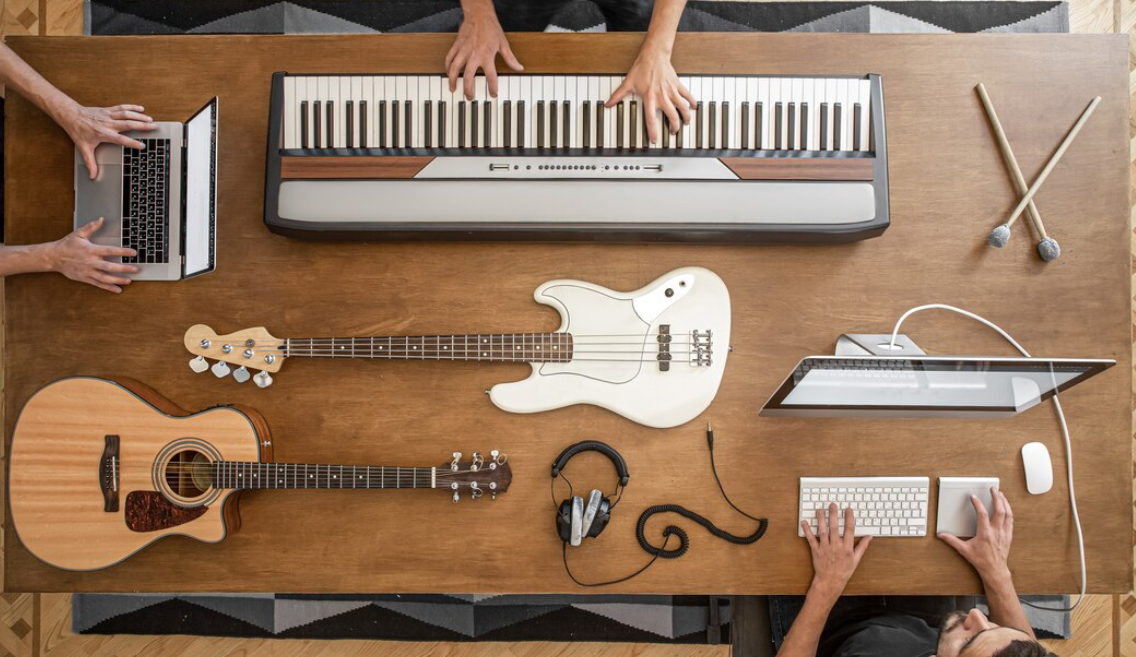How to Improve Your Guitar Timing: Make Metronome Your Best Friend

If you’ve ever found yourself speeding up during a fast section or dragging behind in a slow one, you’re not alone. Timing is one of the most critical skills for any guitarist, yet it’s often overlooked in the rush to learn flashy solos or complex chord progressions. Fortunately, there’s a tool that can make all the difference: the humble metronome.
In this blog, we’ll explore why timing is essential for every guitarist, how a metronome works and some practical exercises to incorporate this powerful tool into your practice routine.
Why Timing Matters in Guitar Playing
Good timing is the backbone of great music. Whether you’re jamming with friends, performing solo, or recording tracks, staying in sync with the rhythm can make or break the performance. Here’s why timing is non-negotiable:
- Playing with Others: In a band setting, poor timing can throw off the entire group. Imagine being the guitarist who speeds up during a chorus or lags during a solo—awkward, right?
- Musical Expression: A steady rhythm allows you to add dynamics, pauses, and emotional impact to your playing without losing the groove.
- Professionalism: If you aspire to gig or record, producers and fellow musicians expect you to stay on the beat. Good timing reflects your professionalism.
The Metronome: Your Secret Weapon for Perfect Timing
A metronome is a device (or app) that produces a steady tick or beep to mark time at a selected tempo. This simple tool trains you to keep a consistent pace, ensuring your timing becomes rock-solid.
Benefits of Using a Metronome:
- Precision: It helps you maintain an even tempo, even during tricky sections.
- Consistency: Over time, practicing with a metronome develops an internal sense of rhythm.
- Speed Control: Want to play faster? Start slow with a metronome and gradually increase the tempo. This builds both speed and accuracy.
- Adaptability: Learning to lock in with a metronome prepares you to play with other musicians and stay in sync with drum tracks or backing tracks.
How to Use a Metronome in Your Practice
Here are some practical ways to incorporate a metronome into your practice routine:
1. Start Simple with Scales
- Select a slow tempo, around 60-70 beats per minute (BPM).
- Play a simple scale, like the major or pentatonic scale, one note per beat.
- Focus on clean execution and even timing.
2. Practice Chord Changes
- Set the metronome to a comfortable tempo.
- Strum one chord per click, then change to the next chord on the following click.
- Gradually increase the tempo as your transitions become smoother.
3. Work on Strumming Patterns
- Choose a strumming pattern and play along with the metronome.
- Start with basic patterns like downstrokes on each beat, then progress to more complex patterns like syncopated rhythms.
4. Master Difficult Passages
- Break down challenging parts of a song and play them slowly with the metronome.
- Once you can play the section accurately, increase the tempo in small increments (e.g., 5 BPM at a time).
5. Experiment with Subdivisions
- Set the metronome to a slower tempo and subdivide the beats into smaller units (e.g., eighth notes or triplets).
- This trains your ability to play complex rhythms while staying in time.
Overcoming Common Challenges
- “It Feels Robotic!”: Some players feel constrained by the metronome at first. Remember, the goal is to internalize the beat, so you can play with or without the metronome while staying consistent.
- “I Can’t Keep Up!”: If you’re struggling, slow the tempo down. It’s better to practice accurately at a slower speed than to rush and make mistakes.
- “I Get Lost!”: Count out loud or tap your foot along with the metronome to reinforce the rhythm.
Metronome Alternatives and Apps
If you don’t have a physical metronome, don’t worry! There are plenty of apps available for your smartphone or tablet. Some popular options include:
- Pro Metronome: A feature-rich app with customizable tempos and time signatures.
- Metronome Beats: A user-friendly app perfect for beginners.
- Soundbrenner Metronome: Offers advanced features like tap tempo and setlists for performances.
The Long-Term Payoff
Practicing with a metronome might feel tedious at first, but the benefits are undeniable. Over time, you’ll notice improved timing, greater confidence, and a newfound ability to groove with other musicians. Your playing will sound more polished, and you’ll be able to tackle faster or more rhythmically complex pieces with ease.
So, if you haven’t already, dust off that metronome (or download an app) and start practicing. Your future self—and your audience—will thank you!
Final Thoughts: The metronome isn’t just a tool; it’s your accountability partner, helping you stay disciplined and focused. Make it a staple of your practice routine, and you’ll see just how far it can take you as a guitarist.
Interested in taking your guitar skills to the next level? Click the below and book a free lesson with us! We’re committed to helping you express yourself freely on the guitar without endless scales and theory. Happy playing!
Author: Daniel Powers Jr, the founder of Real Brave™, serves as the chief inspiration to thousands of students in the Real Brave music instruction program. He’s also the visionary behind PracticePad™, an online platform for live one-on-one online music lessons, lesson tracking, and scheduling. Beyond his entrepreneurial pursuits, Daniel leads a non-profit organization that provides formerly homeless children with access to music education, making a profound impact on their lives. His unwavering dedication to music, innovation, and education continues to inspire individuals to reach their fullest potential while creating positive change in communities. Follow Real Brave on all the socials:
youtube.com/@realbraveinc
twitter.com/realbraveinc
https://www.tiktok.com/@realbraveinc
instagram.com/realbraveaudio
facebook.com/realbraveinc





